Trying to find the Lands? This article shows you just what the Lands are and how to find them.
Disclaimer
Ultimate Reloader LLC / Making with Metal Disclaimer: (by reading this article and/or watching video content you accept these terms). The content on this website (including videos, articles, ammunition reloading data, technical articles, gunsmithing and other information) is for demonstration purposes only. Do not attempt any of the processes or procedures shown or described on this website. All gunsmithing procedures should be carried out by a qualified and licensed gunsmith at their own risk. Do not attempt to repair or modify any firearms based on information on this website. Ultimate Reloader, LLC and Making With Metal can not be held liable for property or personal damage due to viewers/readers of this website performing activities, procedures, techniques, or practices described in whole or part on this website. By accepting these terms, you agree that you alone are solely responsible for your own safety and property as it pertains to activities, procedures, techniques, or practices described in whole or part on this website.
Chamber anatomy and terms
Getting our chamber anatomy down for this story is foundational. Here are some of the terms you’ll want to be familiar with.
- Base: The case rim area of the cartridge (supported by bolt).
- Body Area: The main portion of the chamber.
- Shoulder Area: The tapered section of the chamber that contacts the case shoulder.
- Neck Area: The straight area of the chamber that supports the neck area of the case.
- Case mouth: The area of the chamber where the front-most portion of the case will sit (this is towards the front of the neck area).
- Freebore: The smooth portion of the bore before rifling starts to engage.
- Leade/Throat: the section of bore ahead of the freebore where rifling starts to engage.
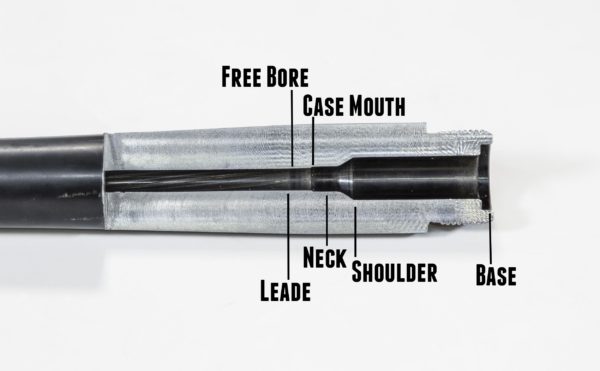
And some terminology related to the rifled section of the barrel:
- Lands: the raised portion of the inside of the barrel that engraves the bullet and spins it.
- Grooves: The largest diameter portion of the barrel. Usually approximately the same as bullet diameter.
- Bore: the interior of the barrel where rifling exists.
Here’s a diagram showing a 4-groove bore:
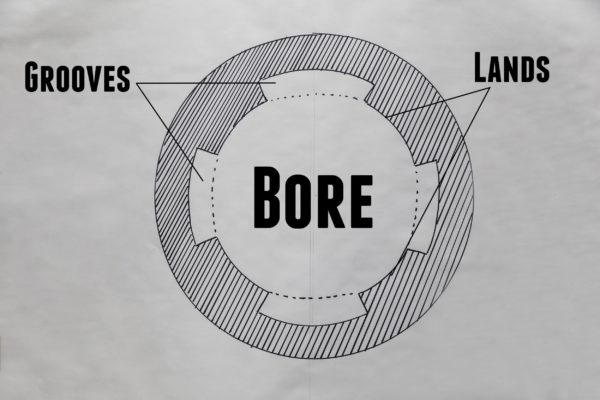
Finding the Lands and headspace
Why would you want or need to do this?
How and where the bullet is seated in the case in relation to contacting the bore will have an effect on powder ignition and burn. The time and distance the expanding gasses have to react and impart forces upon the bullet can affect many things. Those factors can be internal pressure and velocity just to name two. Chamber design and bullet interaction will also affect accuracy. Thus finding the lands can help you with the following:
- Find the “best Bullet’ for your rifle.
- Reloading, setting up bullet seating die to desired depth
- Accuracy (Debatable per E.C.) can have an effect on accuracy
- Throat wear documentation
- Knowing your gun
Short Action Customs Comparator
For the measurements shown in this story, we’re using the Short Action Custom Modular Headspace and Bullet Comparator Set.
Here’s the video from the story we recently published showing this tool:
3 Methods to find the Lands
Method 1: Hornaday OAL Gauge
The Hornady Lock-N-Load O.A.L. gauge method is used by many precision rifle shooters! You’ll need a modified case, which is super easy to make when you know Gavin!
See the Making your own modified case article, and the video here:
If you want to make your own modified case, you’ll need a specific tap and drill to thread the base of the case.
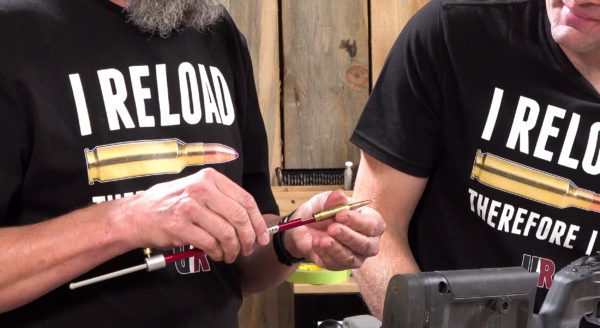
Method 2: Thread Locker
This method has been shown by Piet from Impact Shooting, and was previously shown by pro shooter Matt Hornback. Thanks for the trick guys!
Here’s some notes:
- Ejector on bolt must be disassembled for measurement.
- Start with fired case.
And the steps to perform this method:
- Apply Loctite on case mouth, insert bullet into case (extended OAL).
- Seat into chamber, close bolt to seat the bullet.
- Wait for thread Loctite to set (5-10 min).
- Remove cartridge with care.
- Measure base-to-ogive with comparator.
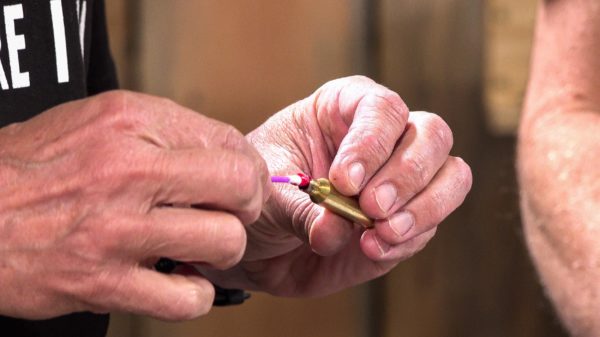
Method 3: Jam Method
This is somewhat similar to Erik Cortina’s method seen here, just not quite as elegant. In both cases a sized case is used. For Erik’s
Here’s some notes:
- Ejector on bolt must be disassembled for measurement.
- Start with fired case that’s been sized.
Steps for Jam Method:
- Bullet is seated long into the neck, the bullet ogive can be colored with a permanent marker if you want to indicate lands contact.
- The cartridge is seated and the bullet is “jammed” into the lands and the case neck/mouth.
- Remove cartridge with care
- Measure base-to-ogive with comparator.
As the cartridge is moved forward by the bolt, the bullet will be seated in the case after it is jammed against the rifling.
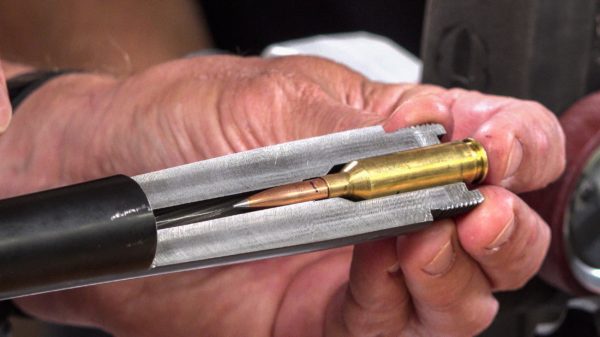
Comparison of Results
As a part of our testing, we wrote down all of the “base to ogive” measurements”
You can see here that when using the OAL gauge, the bullet is seated further out into the lands. What was surprising is how close the “Jam Method” was to the “Loctite” method!
There you have three very good methods to find your lands. Now you can make the choice to “chase the lands” or not. At the very least you can set your seating dies up with this info. I hope this helps to define terms and give reloaders and shooters a reference to chamber terms.
Using this Data for Load Development
When developing a load, you may want to use the “at-lands” dimension for seating bullets. For example, you may start with the bullet seated 0.020″ short (away from the lands) and then shoot groups where seating depth is incrementally increased. In some cases you’ll seat the bullet beyond the point where it’s touching the lands. This is a topic for another article, but this will give you the basics.
Get the Gear
Here’s some of the gear used in this story:
- Hornady Lock-N-Load O.A.L. gauge
- Drill and Tap to make OAL gauge modified cases
- Short Action Custom Modular Headspace and Bullet Comparator Set
Don’t miss out on Ultimate Reloader updates, make sure you’re subscribed!
Thanks,
Travis Fox
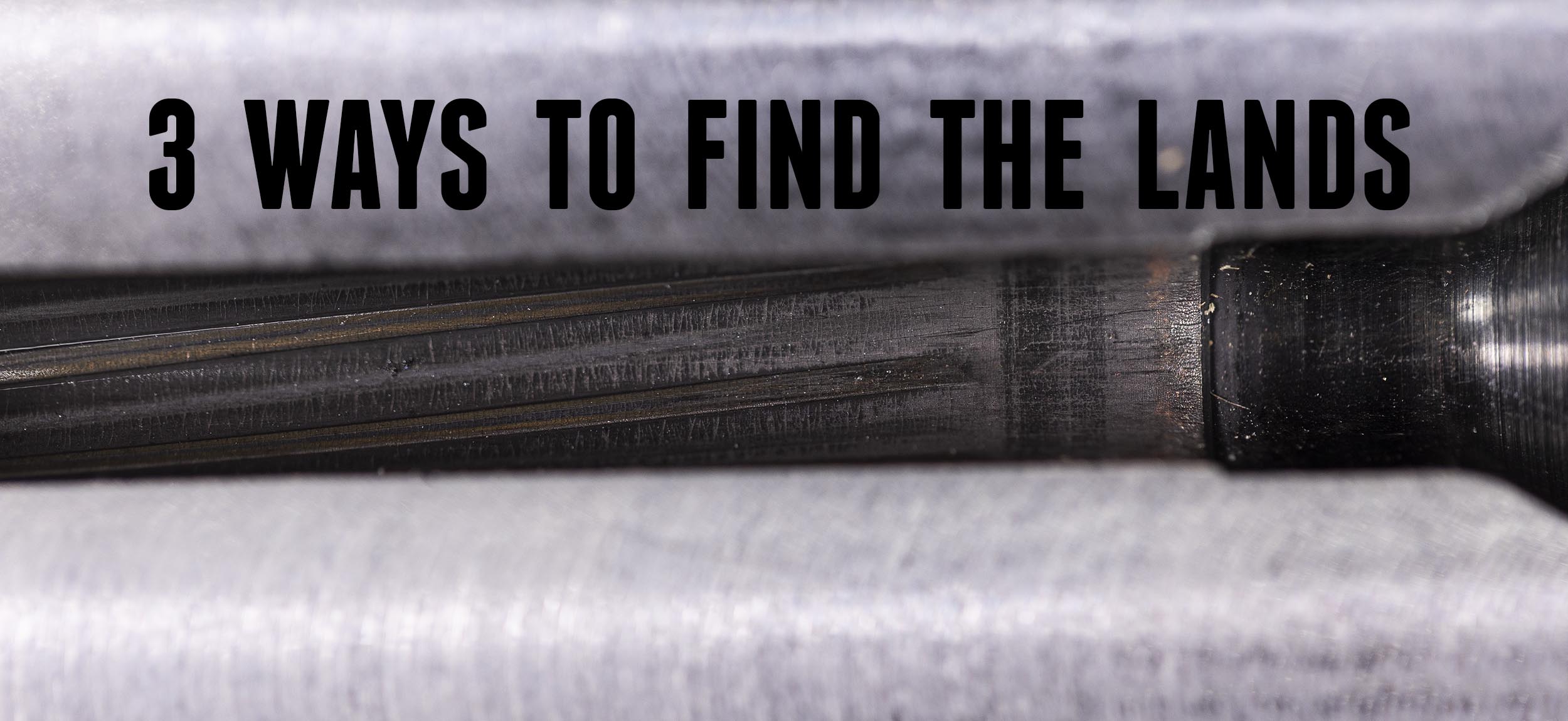



















































































When I get to reload for rifle, as I’m only reloading pistol right now because of the cost of components and the lack of ability of primers I think I’d try all three of these methods and then pick the one that best worked for me and what I was doing and what I wanted. However, unaware of these other 2 methods, other than the OAL gauge, until now, I planned on just going the OAL gauge route,
The question I have is, as just a shooter and reloading to just shoot rather than reload to shoot competition / bench rest, do you want to be touching the lands or do you want to be just before they touch?
Will you guys be doing any testing of bullets seated touching the lands and some just before the lands? I’d really like to see the difference, if any? Thanks in advance….